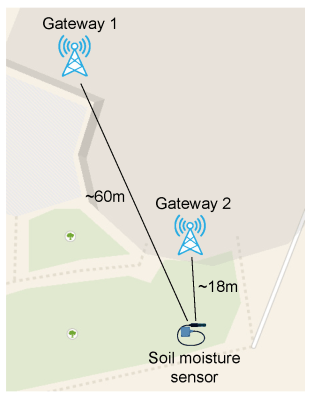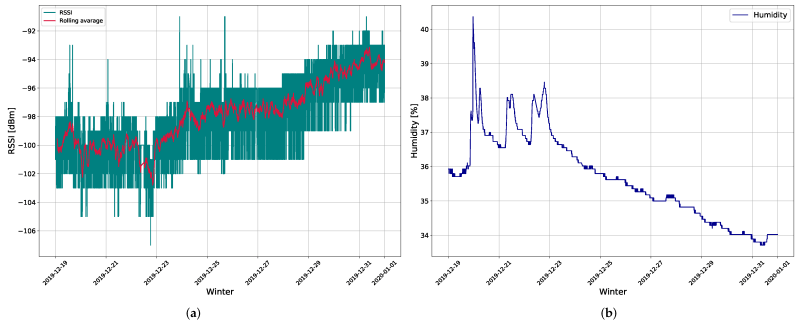
Although we generally think of Internet of Things (IoT) and similar devices as things that are scattered around above ground, there are plenty of reasons to also have such devices underground. These so-called IoUT devices are extremely useful when it comes to monitoring underground structures, but communication via radiowaves is obviously impacted when soil is in the way. Although there are ways to get around this, a 2022 paper by Maja Škiljo and colleagues in Sensors covers an interesting way to make use of this signal attenuation property of changing moisture levels in soil.
By quantifying the exact attenuation of the signal received at the gateways, they were able to determine the soil moisture levels around the LoRa node which had been buried at a depth of approximately 14 centimeters. This LoRa node used off-the-shelf components consisting of an ATmega328P-based Arduino Pro Mini and SX1276-based RFM95W LoRa module with a spring antenna.
During experimentation in- and outdoors it was determined that a narrowband, printed (PCB) antenna was optimal for soil moisture sensing purposes. Other than the interesting question of how to keep soil moisture sensing nodes like this powered up over long periods of time (perhaps periodic retrieval to replenish the battery), this would seem to be a very interesting way to monitor the soil moisture levels in something like a field, where each node can provide its own ID and the received signal providing the relevant data in the form of the SNR and other parameters recorded by the gateway.
(Heading image: The measurement results of: (a) RSSI in dBm collected from gateway 2 and (b) soil moisture during the winter period. (Credit: Maja Škiljo et al., 2022) )

















“IoUT devices” -> “Internet of Underwater Things devices”.. Never heard before. Very creative naming, though. And so nice on the tongue, too.
IoUT: Internet of Useless Things?
B^)
“This LoRa node used off-the-shelf components consisting of an ATmega328P-based Arduino Pro Mini and SX1276-based RFM95W LoRa module with a spring antenna.”
Personally, I like the use of an ATMega328P here, because it’s the base of the Arduino Uno and readily available. Being available in DIP form factor also means that the Arduino can be built from scratch anytime. That’s good for independence.
The dependency on a proprietary LoRa module is a concept I don’t like so much, by contrast. Alas, it can’t be helped. An Open Hardware alternative doesn’t really exist these days, due to patents likely. So I hope for the other tinkerers that the supplies of LoRa chips will last for the near future and that no chip shortage will happen.
Anything that periodically broadcasts a unique ID at the desired frequency would be suitable. LoRa is just a convenient way to demonstrate the principle without reinventing some wheels.
@Joshua: I agree on those points. You could consider using mioty the next time for LPWAN projects rather than LoRa. This protocol uses GMSK and runs on almost any SugGHz Radio – even Semtech. The TSMA approach show clear benefits in contrast to the CSS, leading to a superior robust link in crowded spectrums. It’s ETSI standardized so you are free to implement it by yourself or using available modules and stacks (Ecosystem is still in an early phase tough). A minor license fee may still apply for commercial products due to the patents from the inventors Fraunhofer IIS and others. Good luck.
They could simply use solar garden lights, put electronics in the plastic tip of the pole.
Mark the ideal depth on the pole, use solar for power. More easy to locate as well.
That’s a neat idea!
Not a new idea, just using the signal attenuation of an ESP32 for the purpose of recording soil moisture has already been openly discussed in hardware hacking community, as part of a discussion around all of the problems associated with standard soil moisture sensors. May have even been here at HAD, otherwise it was in a discussion with that guy with a Swiss accent. Would be interesting to see how low tech and optimised the method can be, perhaps not even digital as you just need a periodic RF source at the transmission end.
What is the cheapest these lora modules are available?